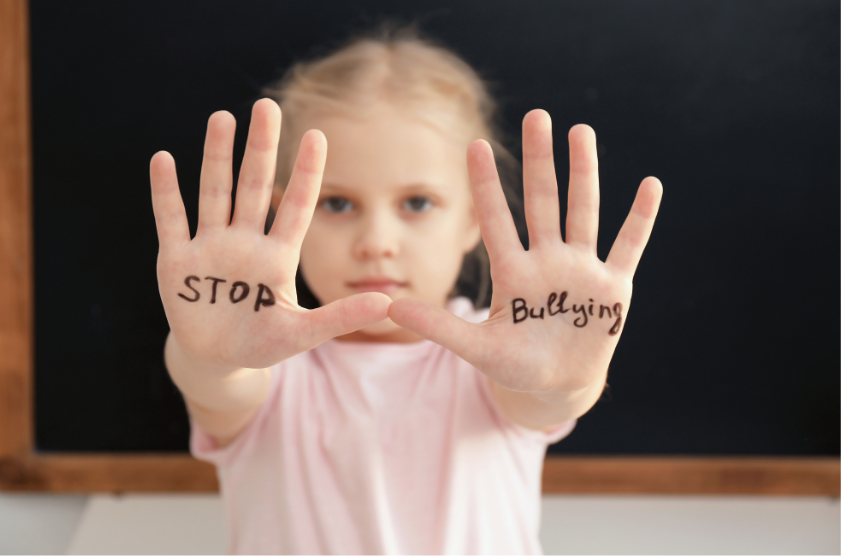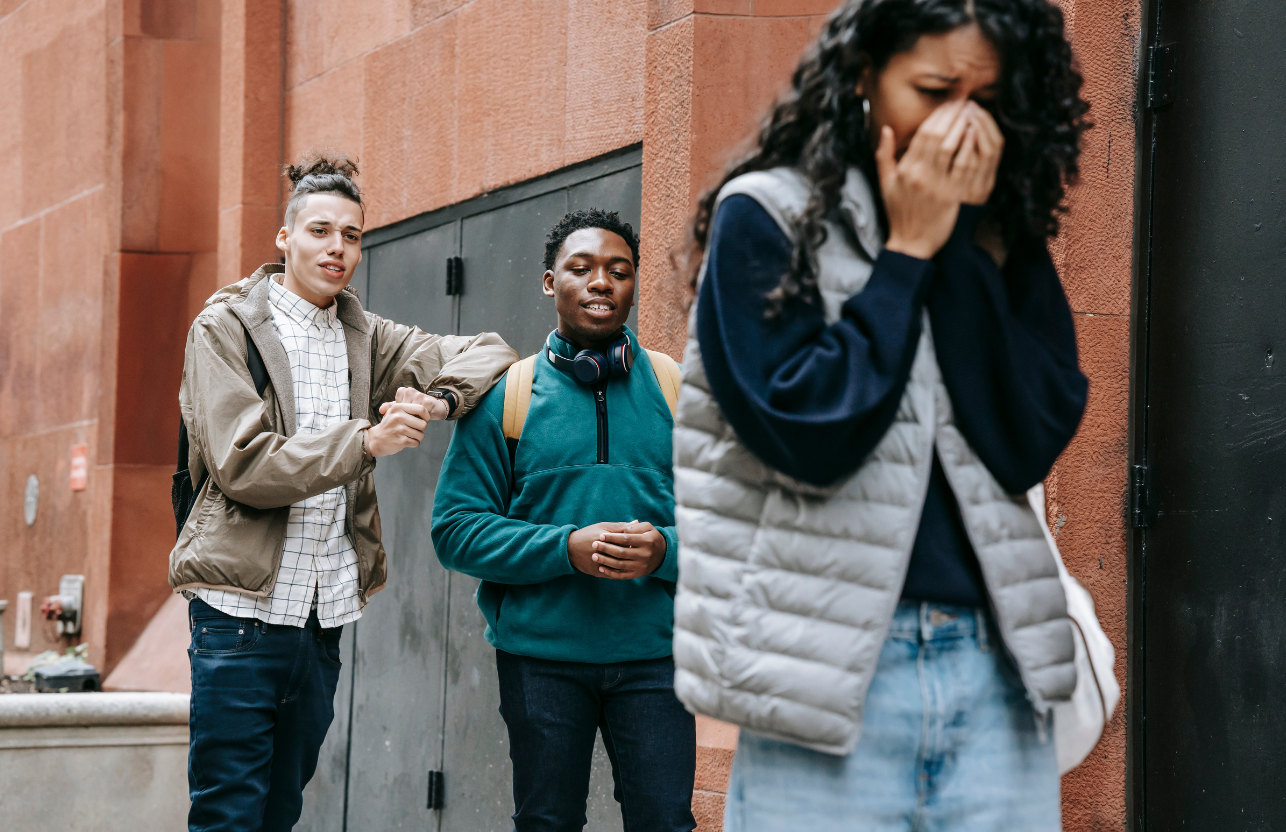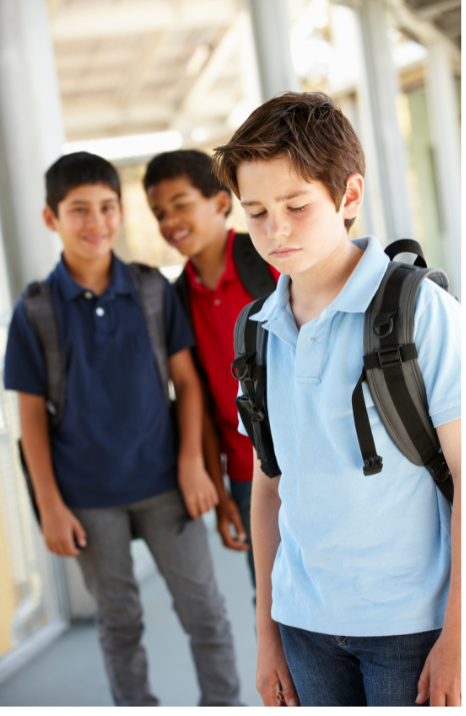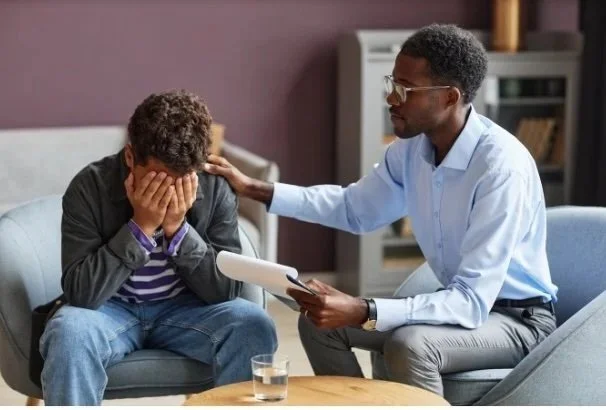Bullying: A Hidden Epidemic. What Parents Need to Know!
We have all felt it!
Ever felt that knot in your stomach, or seen someone else shrink into themselves? That's often the shadow of bullying, a not-so-fun monster that lurks in school hallways, cafeterias, and online spaces. Chances are, you've witnessed or felt the sting of bullying. It's not just a minor annoyance; it's a persistent, unwelcome guest that pops up in hallways, cafeterias, and even sneaks onto our screens. Let's shine a light on this not-so-friendly phenomenon, break down its many forms, figure out how to equip our kids, and discuss how grown-ups can truly make a difference.
So, What's the Big Deal with Bullying?
Forget the old cartoon villains; bullying isn't simply about a quick shove or a stolen snack. At its core, bullying is about repeated and intentional harm. It happens when one person or a group uses an imbalance of power to make someone else feel, well, less than themselves. It's not just a one-off mean comment; it's a pattern of behavior, or at least the constant worry that it will be repeated. The person on the receiving end often finds it incredibly tough to make it stop.
And the harm? Oh, it runs deeper than a scraped knee. Bullying can be:
Physically damaging: Think kicks, punches, or slaps.
Verbally damaging: Name-calling, insults, or put-downs.
Emotionally damaging: Teasing, intimidation, or just making someone feel terrible about who they are.
Ultimately, it's about "When someone tries to make you feel less about who you are as a person, and you aren’t able to make them stop.”
The Many Faces of Bullying
Bullying is quite the chameleon, showing up in various forms, and surprisingly often, it's not physical at all.
Physical Bullying: This is the classic image, involving actions like being kicked, punched, or slapped. Interestingly, male students tend to report experiencing this type more frequently.
Relational Bullying: This is the social engineering kind. It involves being purposely excluded from activities (the original "you can't sit with us!"), verbal attacks, and the ever-popular spreading of rumors. Being made fun of or called names is also a big one here. This form can be seriously impactful, even affecting a student's motivation for schoolwork. A meta-analysis even suggests that social exclusion can be as damaging as physical bullying. – I have seen many cases where this has led to teens and adults fitting the criteria for trauma or PTSD. (Not all trauma will become PTSD, but trauma is a precursor to PTSD).
Cyberbullying: The digital age's mean machine! This happens online or text, and it has unfortunately more than doubled since 2007. It now affects over half (54.6%) of students aged 13-17 in their lifetime. Girls are more likely to experience cyberbullying, often through rumors spread online, while boys might face online threats of harm. Cyberbullying has some particularly sticky characteristics:
Persistence: It's 24/7, anywhere technology is available.
Anonymity: Bullies can hide behind screens, making it harder for targets to know who's behind the behavior. - Look at all the adults doing it on social media!
Difficulty in Detecting: It often happens on private apps or sites, making it tough for adults to spot and understand what is really happening.
Larger Audience: Nasty messages can go viral faster than a cat video, making them incredibly difficult to contain or stop.
Easier to be Hurtful: There's no immediate, in-person reaction from the target, which can make it easier for the bully to be cruel.
Permanence: Once it's out there, it's usually online forever – the internet never forgets!
Bias-Based Bullying (Stigma- or Identity-Based Bullying): This particularly cruel form targets someone's personal characteristics like appearance, race, disability, gender, or sexual orientation. Students with disabilities and LGBTQ+ students often report higher rates of this specific type of bullying, leading to significant emotional distress.
And where does this all go down? Bullying isn't just lurking in dark corners of the internet; it's often right out in the open, most commonly in classrooms, hallways, cafeterias, and outside on school grounds.
Equipping Our Kids: How to Navigate Bullying
Remind the target of bullying: it's NOT their fault, and absolutely do not deserve it. They are incredibly strong for facing it!
Some practical ways for your child to handle bullying:
Tell a Trusted Adult: This is hands-down the most important step. Whether it's a parent, teacher, or another grown-up you trust, speak up. They don’t have to navigate this alone.
Develop a Plan: Work with that trusted adult to figure out how to respond and feel safe. Having a strategy helps them feel more in control of the situation.
Self-Advocacy: Learn to communicate what they need and take action for themselves. Being part of the solution can help them reclaim a sense of power.
Cyber Strategies (Cyberbullying):
Save Everything: Screenshots, texts, emails – keep a digital trail! This evidence is super helpful if you need to report it.
Report Content: Many platforms have tools for reporting harassment or fake profiles. Use them, and make sure to show an adult!
Block & Limit Access: Don't hesitate to block people who aren't respectful, and control who sees your information online.
Take a Break: Sometimes, just stepping away from the device for a bit can help clear your head.
Ignore the Person: It might feel incredibly tough, but sometimes a lack of reaction can defuse the situation.
The Support Squad: How Parents, Teachers, and Adults Can Help!
Adults, you play a truly vital role in preventing and supporting kids through bullying situations.
When a child shares they're being bullied:
Listen Without Judgment: This is absolutely crucial. It's hard for kids to confide in someone, so create a safe, understanding space.
Reassure Them: Repeat it often: "It's not your fault," "You are not alone," and "Bullying is never okay".
Work Together: Involve them in finding solutions. Their ideas matter, and it helps them regain a sense of control.
Document Everything: Especially for cyberbullying, help them save evidence like screenshots or messages.
Inform the School/Authorities: Bullying is serious, so bring in the school or relevant authorities if it's happening in their setting.
Build Communication: Spend positive time together and get to know their friends. Open lines of communication make it easier to spot issues early.
For Cyberbullying: Discuss online conduct early and often. And here's a big one: avoid immediately taking away their technology. Work with them to use technology safely so they don't feel the need to hide future problems. Let them take ownership, but as a parent we need to make judgment calls too. Find a balance. Keep the technology out of bedrooms, especially at night. Phones, watches, school computers. There is always a “get around.”
PLEASE reach out to a Mental Health Professional, School Counselor or Family Practitioner if you are concerned about your Child’s wellbeing.
IF you believe your child will harm themselves or have discussed self-harm -
IF you believe your child has Suicidal Ideation - passive or active.
Resources for Self-Harm and SI.
If you learn your child is bullying others:
It's a bitter pill to swallow, isn't it? The thought that our children could intentionally cause pain. But here's the thing: guiding them back from that misstep isn't just "good parenting" – it's the very heart of it. We all remember those playground dynamics, right? Whether we were the ones teasing or just standing by, we've likely been there. So, when a big wrong happens, our job isn't to shame them into oblivion, but to gently, yet firmly, nudge them from shame to genuine change. That's where the real growth sprouts.
Don't Excuse It: Bullying isn't "just kids being kids"; it's a serious behavior that needs to be addressed.
Inform the School: Work with the school to address the issue collaboratively.
Talk with the Child: Make it crystal clear that bullying isn't tolerated, and there are no excuses for it.
Intervene Immediately: Provide appropriate consequences, such as removing privileges, phones, electronics.
Encourage Empathy: Help them understand how their actions hurt others and that online actions have real-life consequences.
Model Good Behavior: Show them non-aggressive ways to solve problems and manage their feelings.
Seek Professional Support: If needed.
Schools and Communities can also step up by:
Enforcing Anti-Bullying Policies: Many states have laws or policies to prevent bullying, including cyberbullying.
Training Students: Teach witnesses what to do and how to create a safer school environment.
Increasing Adult Supervision: Especially in those common bullying hotspots like hallways and cafeterias. Know what kids are doing online, make it your job as a parent!
Promoting Kindness: As adults we need to model our behaviors. IF as parents we are having online “disputes” arguing with friends or putting people down in front of our children, we are signalling - “being mean is ok.”
Telling vs. Tattling:
The Great Debate (and Why One Wins Big!)
This is a really common fear for kids and teens: "If I tell, will I be a tattletale (or snitch or whatever they are calling it these days)?"
Let's clear the air and set the record straight:
Tattling is about trying to get someone in trouble.
Telling is about protecting yourself or someone else from getting hurt. It's about getting necessary help for a serious situation.





